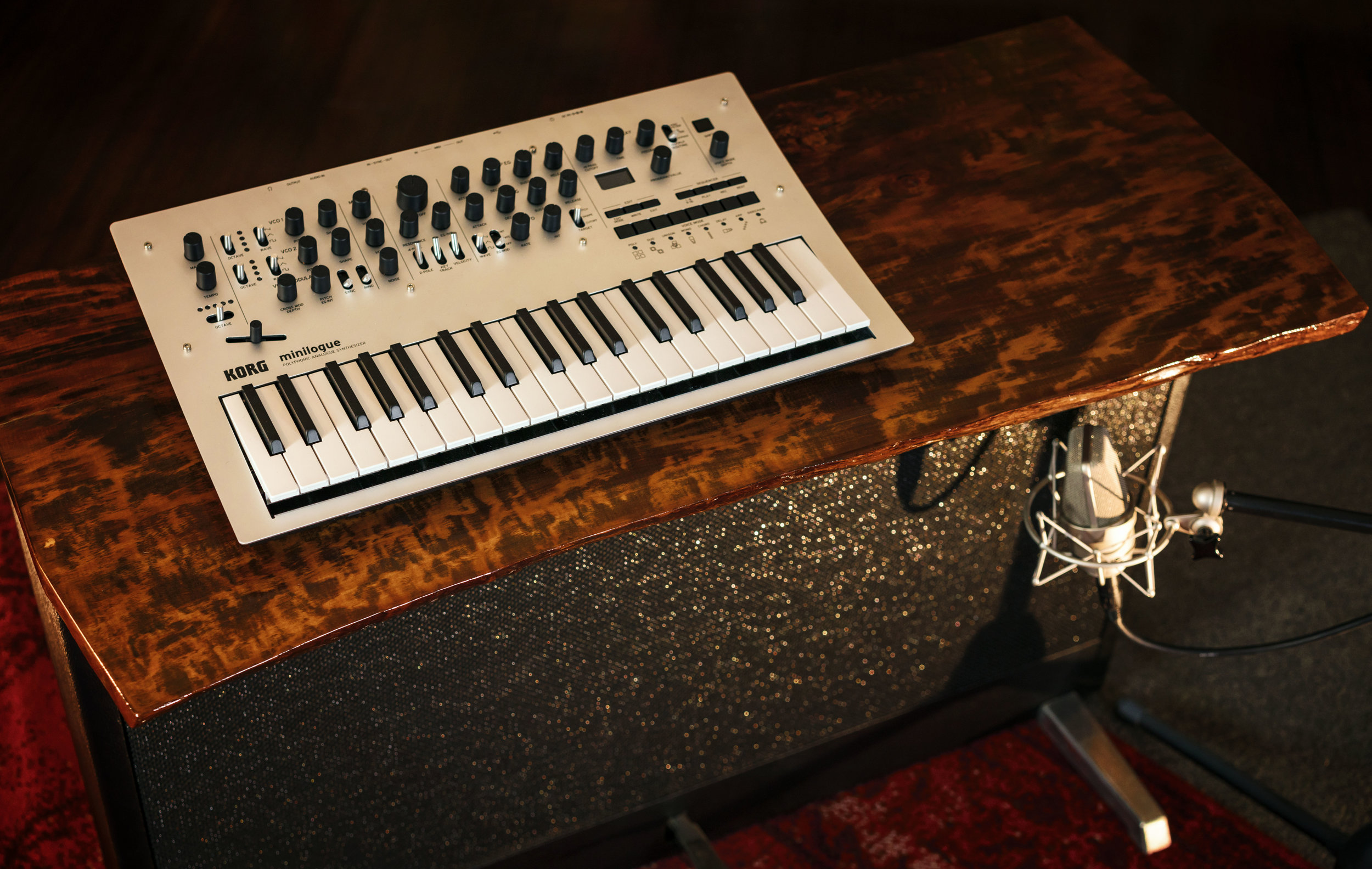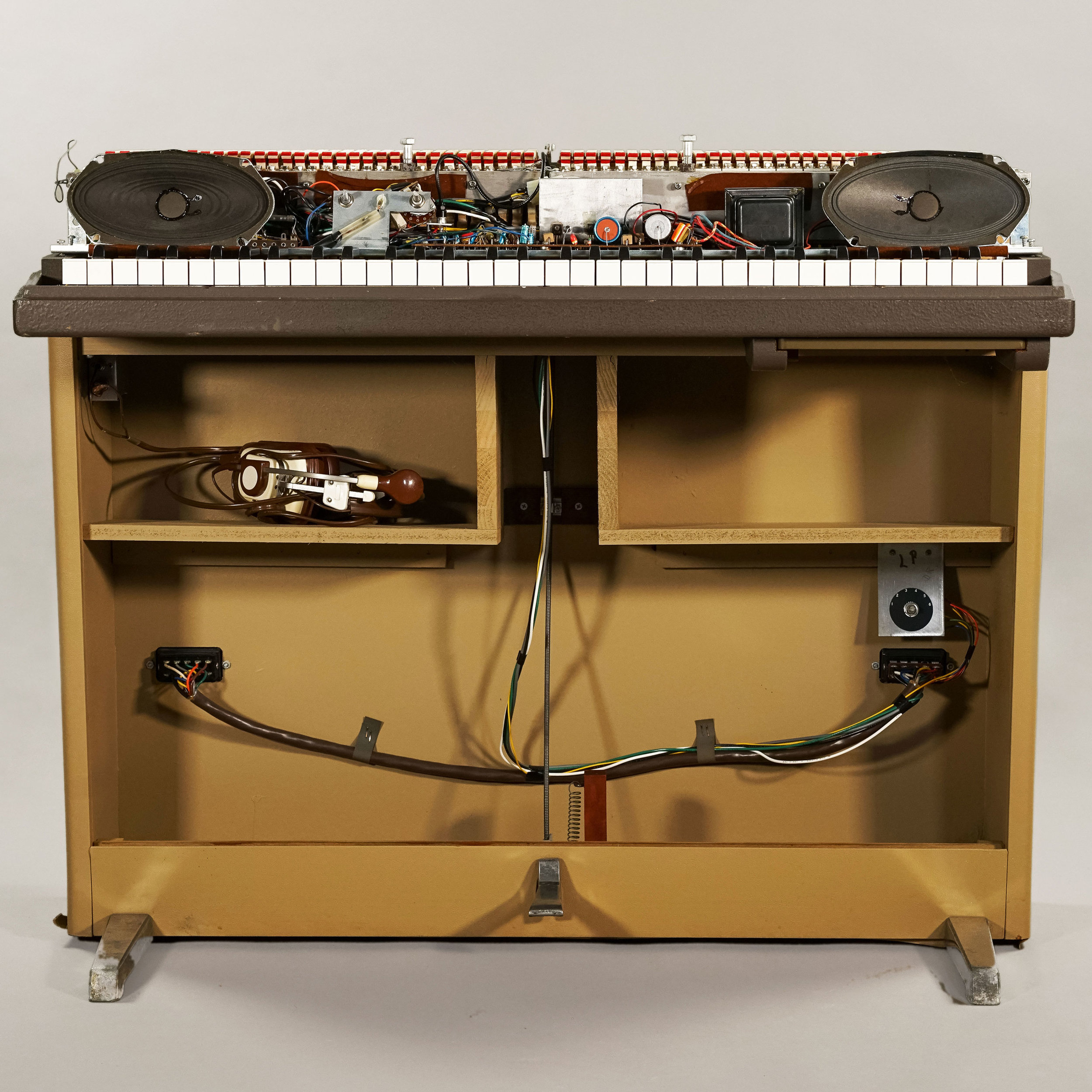Gibson GA-5 vs Fender 5F1: Circuit Analysis
We’ve written about the history of the Gibson GA-5 before. Basically, the GA-5 was Gibson’s first practice amp offering. Not only was the circuit nearly identical to the Fender Champ, but the GA-5’s cabinet was suspiciously similar as well. Eventually, Gibson adopted a more original exterior design, but the circuit remained pretty much the same. This means that a GA-5 of any vintage is an extremely affordable equivalent to a 5F1 Champ.
How to Convert a Gibson GA-5 to a Fender 5F1 (Or Vice Versa)
We’ve discussed the differences between the GA-5 and 5F1, both historically and in terms of the circuit. Here’s how one circuit could be converted to the other, in list form.
Vintage Component Spotlight: Carbon Composition Resistors
Carbon composition resistors are those brown cylindrical resistors that you’ll see in most amps made before 1970. All resistors produce Johnson (thermal) noise, a byproduct of the fact that resistors dissipate heat. However, depending in their material composition and shape, resistors may produce other types of noise as well. Carbon composition resistors produce the most noise. But is this really a bad thing? Yes and no.
Popping and Crackling Sounds in Wurlitzer Electronic Pianos: Is It the Amp, Or Is It the Reeds?
Popping and crackling sounds are a very common problem in Wurlitzer keyboards. Although they may sound dramatic, they’re most often caused by debris in the reed bar. This is very common and mostly harmless to the amplifier.
Does My Wurlitzer Need New Key Bushing Felts?
If you flip a Wurlitzer key upside down, you’ll see two holes underneath. These holes line up with the two metal pins in the keybed that guide the key’s vertical travel. They’re called the key bushings, and they’re lined with felt. As the keyboard is played, this felt becomes compressed over time and the keys no longer fit snugly around the key pin. Or, if these felts become damaged, they could prevent the key’s smooth travel and the touch-responsiveness of the keyboard becomes compromised.
Why Are My Wurlitzer's Keys Sticking?
There are many different problems that could make a Wurlitzer’s keys stick. Because sticky keys are so case-specific, there is no cure-all solution. However, here are some ideas as to why your Wurlitzer’s keys are sticking.
How to Tell if Your Wurlitzer Requires Maintenance
Some vintage keyboard are in a state of total dilapidation, and will obviously need a lot of work before they can be played. But others are in better condition. They turn on, sound comes out, all or most of the keys work. Is this enough? When can servicing a keyboard that “works” make it perform much better?
A Short Guide to Wurlitzer Electronic Piano Sustain Problems
The most common sustain problem on a Wurlitzer 200a (or earlier) keyboard is too much sustain: the note continues to ring out, even when the pedal is not depressed. This is almost always caused by damper felts that are excessively compressed or otherwise deteriorated. In other cases, the Wurlitzer’s sustain pedal doesn’t do anything when depressed, and the piano never has sustain. This is usually because the pedal is not making the proper interior connection. This guide will help you address both problems.
Techniques for Recording a Wurlitzer Electronic Keyboard
The Wurlitzer electronic keyboard was first commercially released by Wurlitzer in 1955 as a convenient (and potentially silent) tool to practice and study piano. But, almost immediately after its release, the instrument was discovered by professional musical talent such as Ray Charles and found its way to stages and recording studios. Because of the instrument’s unmistakably unique and warm tone and numerous practical advantages, it was a solid choice for recording artists from the very beginning.
Easy Fixes for Malfunctioning Wurlitzers
Some issues involving a vintage Wurlitzer electronic piano are complex to resolve. Others are caused by loose hardware, disconnected wires, or pieces of debris. If you’d like to try some easy fixes before you call a tech, here are some steps that you can take.
How Many Wurlitzers Should I Have?
This may sound crazy, but if you can’t decide which model of Wurlitzer is right for you, you may need two Wurlitzers. All Wurlitzer models have subtle differences between them, from the amp to the reeds to the feel of the keyboard. In some respects, these differences can make two Wurlitzers of different models sound like two totally different instruments. In order to achieve all of the tonal possibly a Wurlitzer can offer, you may need two Wurlitzers.
What's the Difference Between a Rhodes and a Wurlitzer?
The Rhodes and the Wurlitzer are sometimes mentioned interchangeably, but they’re actually pretty different. We do spent 99% of our time around electronic pianos, but trust us: it’s not just our bias talking. A Rhodes and a Wurlitzer sound different, feel different, and were invented in completely different contexts. Most studios would benefit from one of each. (Well, one Rhodes and two or three Wurlitzers - but now this might be our bias talking.)
Do I need a preamp for recording my synth?
Short answer- ‘need’ is a strong word, but your synth tracks would certainly benefit greatly from a preamp. Simply put, adding a preamp to your synth lines will make them come through a little stronger and have more impact on the mix. Any preamp, whether they be solid state or tube are designed to make your signal louder.
We have done some A/B testing with one of our favorite analog synths, the Korg Minilogue, and found that a preamp or external tube amp helps the synth to stand out. It goes without saying that you will be using a wide range of synth voices so where and when a preamp adds the most will vary.
What keyboard amp should I choose?
If you are psyched about your new keyboard or synth and need a way to amplify it other than going direct to a PA, there are options for you! Amplifiers come in many shapes and sizes and have varying features. If this is the first (or only) amp you are purchasing for your keyboard, it is first a good idea to decide what your needs are and what you will be using it for most.
Here are some uses you might have for a keyboard amplifier.
Steps to Restoring a Vintage Wurlitzer Keyboard
How do we restore a Wurlitzer electronic piano? Here’s a list of all the issues we commonly address.
Wurlitzer Quick Reference Chart: Things We Included, and Things that We Didn't
Not going to lie: it was hard to narrow down the many variations of a Wurlitzer to create our Wurlitzer Quick Reference chart. We decided to do a quick write-up of all the subtleties that the graphic glosses over. And - let’s be clear - everything about that chart is a subtlety. Every Wurlitzer has that iconic Wurlitzer sound, and any model is capable of being restored to a highly playable, musical state. Amps can be modded for aux outputs and vibrato. Noise can be minimized. Console models can be put on legs. Portable models can be attached to consoles. (We have so many 206 bases. Please help us.) The chart is mostly about where you want to start, and how much work you want to put into your Wurlitzer to make it an exceptional piece of gear in the age of digital recording.
Anyway, here’s a few notes on the chart about the things we included, and the things we left out.
Choose the Right Wurlitzer Model with our Quick Guide to Wurlitzers!
Having trouble deciding which Wurlitzer model is right for you? Take a look at our handy infographic!
This infographic is an at-a-glance guide to the features of common Wurlitzer models. All models of Wurlitzers are excellent instruments, and with the right restoration any one of them can become a functional, professional piece of gear. However, all Wurlitzers were manufactured 40+ years ago, at a time when standards for recording were much different. And, anyway, professional musicians weren’t necessarily the most lucrative target audience: that would be schools, who bought keyboards six at a time. So, some features that would be standard today - such as an aux output - are absent from many models.
On Electronics Safety
At Tropical Fish, we are pro-electronics safety. We don’t want anyone to get hurt working inside a tube amplifier. At the same time, we hate to see people writing online who overstate the dangers of working on a tube amplifier. It really seems like certain factions want to discourage people from opening their amps up at all. This is a bad thing.
How to Remove Your Wurlitzer's Lid
Wurlitzers have a lot of moving parts under the hood, many of which can be adjusted to the player’s taste. Regulating your own Wurlitzer means that you can dial in the feel and touch-responsiveness that you prefer, making your keyboard truly your own. Of course, the first step to regulation is taking off the Wurlitzer’s lid.
How to Clean an Electronic Piano, Part II
If you’ve read Part I of our guide on how to clean an electronic piano, you’re familiar with the general technique. (Spoiler alert: Take everything out and then start cleaning.) In Part II, we’ll discuss how to tackle some more specific and serious messes.















